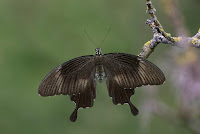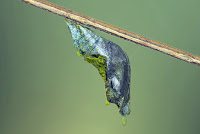<> Papilio chaon (Westwood, 1845) <>
the Yellow Helen ผีเสื้อหางติ่งชะอ้อน
Click on any photo to see all photos full size in Lightbox
Additions and corrections to the information provided on this page is always welcome. Please use the Contact form.
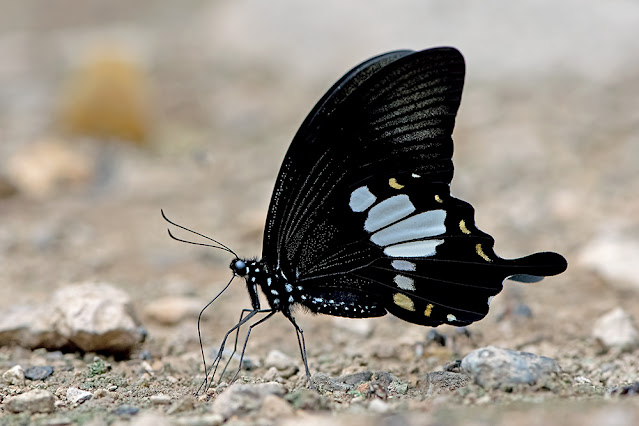
Photo taken at Chiang Dao Wildlife Sanctuary, Chiang Mai, Thailand 540m a.s.l.

This species was previously known as a subspecies of Papilio nephelus but Condamine et al. (2023), divided the taxon nephelus into two separate species, nephelus and chaon, based on molecular analysis. Although it is fairly widespread throughout the continental part of the region it is not particularly common. Papilio chaon is a little variable in appearance, especially in the transitional zones between subspecies, but there is little visual difference between the sexes. The species superficially resembles P.helenus but it is larger and the submarginal lunules on the underside of the hindwings are yellow rather than red.
It has a swift and powerful flight and males are often seen patrolling their territory along streams and forest edges. The species is multivoltine and there are several broods per annum but there may be fewer in the most northerly parts of the region.
Synonyms: Papilio nephelus chaon
Taxonomy: Animalia - Arthropoda - Insecta - Lepidoptera - Papilionidae - Papilioninae - Papilio - chaon
Regional subspecies: Papilio chaon annulus (S.Myanmar, S.Thailand, northern part of W.Malaysia), Papilio chaon chaon (Nepal, Bhutan, NE India, Myanmar, Thailand, Laos, Cambodia, Vietnam, S.China)
Regional Distribution: India, Nepal, Bhutan, Bangladesh, Myanmar, Thailand, Laos, Cambodia, Vietnam, China
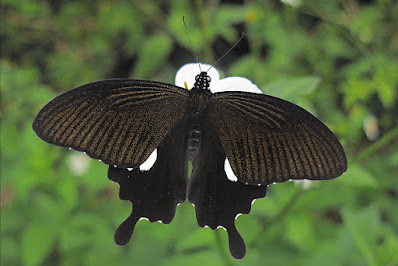 |
| Lamnamkok National Park, Chiang Rai, Thailand 520m a.s.l. |
Habitat: Papilio chaon is found in natural and disturbed humid deciduous montane forest. Usually seen in the vicinity of streams at low to moderate elevations but up to 2500m a.s.l. in the Himalayan region.
Flight time: all year depending on location Wingspan: 100-120mm
Life History: egg 4 days instar 1 2-3 days instar 2 2-3 days instar 3 2-3 days instar 4 4-5 days instar 5 6-8 days pupa 15-18 days Total egg to adult 35-44 days
All times are approximate and can vary depending on the season and on the host used.
Larval Hosts: Bergera koenigii, Citrus × aurantiifolia, Citrus × limon, Citrus spp., Clausena anisata, Clausena harmandiana, Clausena willdenowii, Glycosmis pentaphylla, Micromelum minutum, Tetradium glabrifolium, Zanthoxylum ailanthoides, Zanthoxylum asiaticum, Zanthoxylum avicennae, Zanthoxylum nitidum, Zanthoxylum ovalifolium, Zanthoxylum rhetsa, Zanthoxylum scandens (Rutaceae).
Actual host plant used depends upon location and availabilty of plant species.
Adult Food Sources: Nectar - Ixora coccinea, Ixora javanica, Mussaenda frondosa (Rubiaceae), Lantana camara, Melastoma malabathricum (Verbenaceae), Patrinia villosa (Valerianaceae), Hibiscus rosa-sinensis, Urena lobota (Malvaceae), Delonix regia (Fabaceae), Tagetes erecta (Asteraceae). Other - mud puddling.
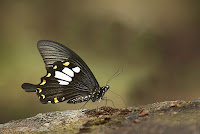 |
| Lamnamkok National Park, Chiang Rai, Thailand |
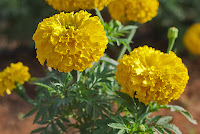 |
| Tagetes erecta, a nectar source |
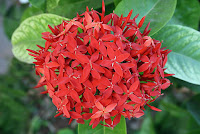 |
| Ixora coccinea, another nectar source |
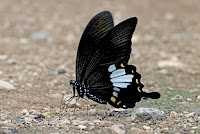 |
| Chiang Dao Wildlife Sanctuary, Chiang Mai, Thailand |
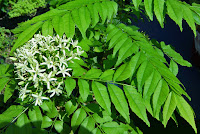 |
| Bergera koenigii, a larval host |
 |
| Zanthoxylum asiaticum, another larval host |
Links to other pages in this series for species in the same subfamily
Graphium sarpedon
Papilio chaon
Papilio paris

